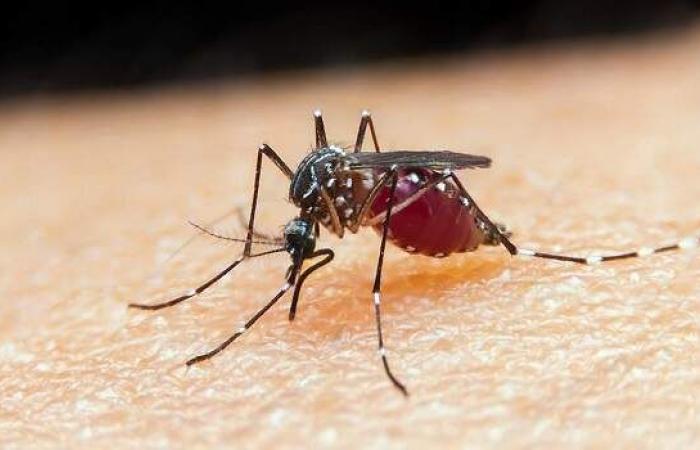Over the past few years, progress in reducing malaria has stalled – the disease not only continues to put people’s health and lives at risk, but also perpetuates a vicious cycle of inequality. The alert comes from the World Health Organization (WHO) due to World Malaria Day, celebrated this Thursday (25).
“People living in the most vulnerable situations, including pregnant women, babies, children under five, refugees, migrants, internally displaced people and indigenous peoples continue to be disproportionately affected,” analyzes the entity. WHO data indicate that, in 2022, 249 million new cases of malaria were recorded, in addition to 608 deaths across the planet.
Africa
Of the total malaria cases, 94% were identified on the African continent. The region also accounts for 95% of deaths from the disease. Rural populations living in poverty and with less access to education are the most affected. Given the scenario, the WHO points out that the goals established for reducing malaria by 2025 will not be achieved.
The entity also warns of barriers in areas such as equity in access to health, gender equality and human rights in strategies to combat malaria. “Everyone should have the right to timely and accessible quality services to prevent, detect and treat malaria, but this is not a reality for everyone,” highlights.
Babies and children
The data also shows that babies and young children continue to account for the highest number of deaths caused by the disease – in 2022, four out of every five deaths related to malaria on the African continent were recorded among children under five years of age. Inequalities in access to education and financial resources, according to the WHO, further aggravate the risk.
“Children under five years of age from poor families in sub-Saharan Africa are five times more likely to be infected with malaria than those from richer families.”, warns the entity.
Pregnant women
The WHO also highlights that pregnancy reduces the patient’s immunity to combat malaria, making pregnant women more susceptible to infections and increasing the risk of severe disease and death. Gender inequalities, therefore, increase the risk of contracting the disease.
“If left untreated, malaria during pregnancy can cause severe anemia, maternal death, fetal death, premature birth and low birth weight newborns.”indicates the WHO.
Refugees, migrants and indigenous people
Finally, the entity recalls that climate change and humanitarian emergencies, including natural catastrophes, as well as conflicts in countries where malaria is considered endemic, displace populations and place people in a vulnerable situation to the disease.
“These and other groups continue to be excluded from the services they need to prevent, detect and treat malaria, hindering progress in achieving a world free of the disease,” concluded the WHO.
Recommendations
Among the recommendations listed by the entity to combat malaria are:
- End discrimination and stigma;
- Involve communities in health decision-making;
- Bringing healthcare close to where people live and work, through primary healthcare;
- Address factors that increase malaria risks;
- Include malaria control interventions in universal health coverage.
What is the disease like
According to the Oswaldo Cruz Foundation (Fiocruz), malaria is an infectious, febrile, acute and potentially serious disease. It is caused by the parasite of the genus Plasmodium, transmitted to humans, most of the time, by the bite of an infected mosquito of the genus Anopheles, also known as capuchin mosquito.
The disease, however, can also be transmitted by sharing syringes, by blood transfusion or from mother to fetus during pregnancy.
After the transmitting mosquito bites, the parasite remains incubated in the infected individual’s body for at least a week. A variable clinical picture then appears, including chills, high fever, sweating and headache. Muscle pain, tachycardia, enlarged spleen and, sometimes, delirium may also occur.
In the case of infection with the protozoan P. falciparum, there is also a chance of developing what is called cerebral malaria, responsible for around 80% of lethal cases of the disease. In this condition, in addition to fever, headache, slight stiffness in the neck, sensory disturbances, disorientation, drowsiness or excitement, convulsions and vomiting may appear. The patient may go into a coma.
Malaria treatment aims to eliminate the parasite from the patient’s bloodstream as quickly as possible and should be started as soon as possible. Immediate treatment with antimalarial medication – within 24 hours of the onset of fever – is considered essential to prevent complications.
If the diagnostic test is not accessible within the first two hours of care, treatment with antimalarials should be administered based on the patient’s clinical and epidemiological status.
Brazil
In Brazil, according to Fiocruz, there are three species of Plasmodium parasites that affect humans: P. falciparum, P. vivax and P. malariae.
The most aggressive is P. falciparum, which multiplies rapidly in the bloodstream, destroying 2% to 25% of the total red blood cells (red blood cells) and causing severe anemia, in addition to small clots that can cause problems such as thrombosis. and embolisms in various organs of the body.
P. Vivax, in general, causes a milder type of malaria, which does not affect more than 1% of red blood cells, and is rarely fatal. However, its treatment can be more complicated, as it stays in the liver for longer, making it difficult to eliminate. Furthermore, there may be a decrease in the number of platelets, which can confuse the infection with another very common disease, dengue, delaying the diagnosis.
The disease caused by the species P. malariae has a clinical picture very similar to that of malaria caused by P. vivax. It is possible for a person affected by this parasite to have relapses in the long term, and may develop the disease again years later.
- Date: 04/25/2024 08:04
- Amended: 04/25/2024 08:04
- Essay
- Brazil Agency
Tags: pregnant women children vulnerable people are .. ABC ABC
--





